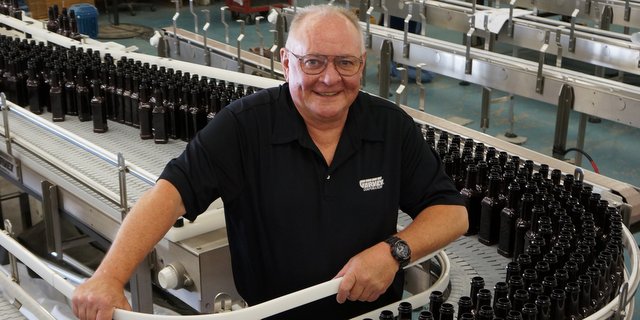
The science of commercial beer goes beyond the chemistry of brewing. The process of packaging it is an equally impressive engineering feat, requiring bottling, canning, kegging, labeling, sorting, accumulating, boxing, palletizing, shipping and so much more in between. Visit a packaging and distribution center at a brewery like New Belgium Brewing Co. and the automation of the packaging process can look a little like an ultra-complex Rube Goldberg Machine.
As craft breweries grow, their bottling, canning and packaging lines will become interconnected chains of automated systems ranging from filling lines and labelers to bottle conveyors and case erectors. The process of engineering and re-engineering these packaging lines (as brewers grow) can be quite complex and expensive. To help prepare upcoming brew barons for their future packaging needs, we tapped the big brains of some of the industry’s most successful craft brewers and some of the industry’s most well-respected manufacturing brands. Those awesome insights are below, ranging from production systems engineering to packaging hall design. We raise a hearty toast of thanks to everyone involved.
Keep the filler up
Darren Moser, director of brewing operations
Maui Brewing Co. (Lahaina, Hawaii)
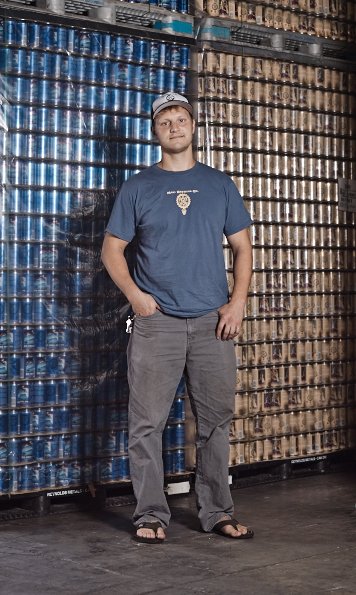
During packaging operations, it is important to maintain consistent and continuous run speed during filling, regardless of equipment. While reliable equipment and speed-to-volume ratios are necessary, achieving target package specifications and troubleshooting critical control points in package quality is only possible if you can maintain a steady run duration. When the filler is starting and stopping often, product is allowed to warm in the pipeline and the bowl or pre-tank causing inconsistent fills. These inconsistencies are then difficult to differentiate from short fills, high dissolved oxygen or excessive loss of carbonation caused by factors other than startup and downtime.
The design and staffing of the upstream and downstream flows are critical to keeping the filler on uptime. Upstream mechanics should be designed to always keep the filler supplied with both materials and product, likewise downstream should always be sized to pull finished containers away with ease to avoid backups. Training of the staff is imperative. The operators must know that the goal is to see the filler in continuous operation and shape their tasks and troubleshooting around that objective. Additionally, availability of unsalable product in the form of short fills and out of specification product should not be viewed as a perk. Incentives should be in place for all staff to reduce unsalable product instead. This will ultimately increase both efficiency and yield for profitability.
Faster is not always better. The ability to operate any packaging line at maximum capacity is only most efficient if the entire line can keep up and total package quality is also acceptable. A line running at 300 containers per minute with 25 percent downtime and inconsistent fill quality due to starting and stopping is inferior to a line running consistently at 270 containers per minute. A good packaging staff will learn the line, adjust filling speed to accommodate the complete line capacity and define areas that can be improved to increase efficiency and total package quality as a system.
The machines are moot without the people
Marc Finer, senior packaging engineer
New Belgium Brewing Co. (Fort Collins, Colo.)

As brewers and packagers, we spend a lot of time working with vendors and sales folks designing and assembling equipment. We create RFPs, document our specifications and build timelines with penalties to create a project agreement. We spend a large portion of our brewery’s capital dollars on the best packaging equipment we can find in the world. Then we work long hours with these partners and vendors to get our shiny new equipment up and running as a system, at a very high rate of efficiency. After all the celebrating and back-slapping, you find yourself alone with your equipment. Shortly after this time is when you notice that your equipment’s efficiency is beginning to drop — complicated systems need attention.
This is when you realize that those couple of trusting employees, who helped you through the equipment installation and startup, are going to become real assets and that ridiculously expensive equipment you are in debt for will not actually produce any profit for you without the proper love of a human being. Yes, I did say love and, yes, people are complicated and unpredictable. Your inexperienced, big-eyed, motivated employees are your only hope. It’s time you invested in what really matters and what will ultimately protect your livelihood — people. Right there in front of you is a team of driven, hardworking folks ready to give it their all. It is a crazy realization the dichotomy between how symbiotic and how illusive this relationship can feel.
Take advantage of this situational relationship, not the people. This partnership deserves time and a great deal of effort. Plant, water, feed and cultivate these relationships into friendships. Challenge them, let them dive into the fire and, yes, let them get burned — we definitely have enough fire to go around in this industry. In the end, these folks care just as much as you do about the brewery and the industry. This beautiful brewing industry can defy the norms of capitalism and create a sustainable business that rises above. This beauty needs to be shared, enjoyed and grown together. Do not hold your knowledge too close, set it free and inspire someone today.
The importance of preventive maintenance
Matt Smith, packaging manager
Ninkasi Brewing Co. (Eugene, Ore.)
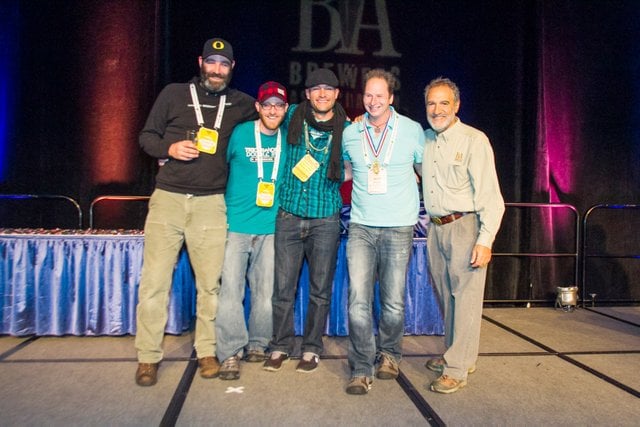
Whether you own a shiny brand new packaging line or a boneyard of random packaging equipment, there is one important item to keep focus on. That item is preventive maintenance. It’s the only way to avoid machine failure and to help prevent future breakdowns. Greasing the same zerks every week may seem redundant at times, but something so small will help ensure the longevity of your packaging equipment.
Initiating a preventive maintenance schedule is fairly easy to create and implement. A good place to start is to go through all of the current machine manuals on hand, and review and record the recommended maintenance schedules listed in those manuals. An even better idea would be to call the machine manufacturer just to make sure all of the information in the manual is accurate and up to date. If no manual can be found, then contacting the machine manufacturer is the best option for replacement. Gather all the information you can and make a specific three-ring binder for each machine with all of the scheduled repairs and overhauls listed very clearly for the operators to understand. This will also help maintenance personnel know which machine needs attention and how frequently. Setting a specific date every week or month for scheduled maintenance is another great way to ensure your packaging equipment will last and perform how you need it to.
Staying on top of preventive maintenance will not only prolong machinery life but will also improve the quality of the product you are packaging. Cheers!
Modifications to conveyors, palletizers, depalletizers and robotics
Chris Hutson, senior mods and upgrades manager
Intelligrated (St. Louis)
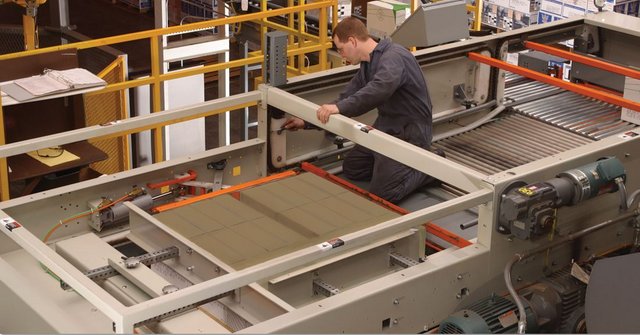
With craft breweries growing at an astronomical rate, craft breweries must immediately accommodate increased capacity and prepare for further expected growth. Some breweries have made the mistake of underestimating their imminent growth, and as a result, have prematurely outgrown the rate capacity of newly purchased equipment. Whether buying used or new packaging equipment, breweries will need to modify, upgrade or retrofit the equipment at some point during its lifecycle. With future growth goals in mind, be sure to do your homework regarding equipment application, costs and available alternatives. Revitalizing or modernizing equipment is a cost-effective alternative to a complete system replacement, extending functionality and adding years to the operational life expectancy of a system.
First, complete an audit. Expert auditors can determine what adjustments are required to allow your equipment to run at optimal speeds and factory-specified settings. This analysis should result in increased ROI, capacity, throughput and uptime. Look for a company who has extensive experience completing retrofits and upgrades on their own and other manufacturer’s equipment. Second, performing a needs assessment will identify available upgrades for your system to run more efficiently and meet current operational demands. These enhancements support craft brewers’ abilities to meet today’s challenges as well as those of tomorrow, such as frequent package and pallet size changes. For example, soft-handling upgrades can significantly reduce glass breakage and other product damage. Product changeover can also be automated to improve line efficiency. Finally, a full catalog of product enhancements is available based on equipment type and model. You can ensure success by partnering with a company that has a dedicated staff, capabilities and capacity to meet your growing business needs.
Dry labels with an air blower system
Darryl Hoffinger, packaging and racking manager
Craft Brew Alliance (Portland)

In order to facilitate optimal labeling of craft beer bottles, it is important to have as dry a bottle as possible. Unlike large breweries which employ pasteurizers that leave filled bottles at room temperature and almost completely dry, most craft brewers label cold, wet bottles. After a bottle is filled and on its way to the labeler, condensation will completely soak the outside of the bottle. This presents challenges to the labeling process as the moisture on the bottle can potentially dilute the label adhesive, soak the label or generally prevent optimal adhesion between bottle and label.
The best solution for craft brewers to get as dry a bottle as possible is to install a high-velocity air blower system at the labeler in-feed. Using this type of system will allow you to blow the condensation off of the bottles right before they are labeled, giving as optimal conditions as possible for labeling cold bottles. Most of these systems will use an electric motor to run a high-velocity air blower that will force a large volume of air out of adjustable nozzle reducers. The adjustable nozzles will allow you to aim nozzles up under the crown, at the neck label area as well as at the body label area. You can also aim more nozzles at an area of the bottle that may need extra drying before labeling. This will improve your labeling tremendously and is a much better solution than using compressed house air, which can be quite expensive for daily or long-term use.
Speaking from experience, we were using an air blower system that had been in place for 15-plus years and could no longer be considered high volume or high velocity. We found ourselves spending an inordinate amount of time continuously fighting labeling issues. Once we installed our current high-volume blower system, many of our labeling issues were solved immediately.
We utilize a laser coder for date and time stamp, and the date code is applied near the end of the labeling cycle. Once the new high volume blower system was installed, we also noticed a positive effect on legibility of our laser code. The paper label was no longer as wet as it was with the previous air blowing system and this allowed the laser to etch a more precise code onto our labels.
Optimizing packaging logistics
Leslie LeMair, industry manager for beer, wine and spirits
Rehrig Pacific Co. (Los Angeles)

There is no industry that has challenged the status quo quite like craft beer. Since the inception of the craft beer boom, brewers have been introducing innovative styles, flavors and taste profiles. They have challenged the standard go-to market strategies with fresh, unapologetic and relevant sales and marketing campaigns. The same way craft beer has approached these initiatives is how you should view your keg management and the shipping platforms you use to deliver your wares to the world.
The status quo for keg management has been the use of expensive stainless steel that requires laborious maintenance to clean and test to ensure the flavor and quality of your beer will be sent and tasted by the consumer as you intended. A brewer can choose to own and manage that stainless keg or use a keg management service that still places the responsibility of maintenance and tracking on the brewer. What if all of this could be simplified and rethought? It has.
Reusable packaging is the most cost-effective way to enhance the consumer experience. Reusable no longer means just stainless. Today there are hybrid kegs that deliver beer in a pristine new PET bottle — along with the cost savings of a reusable shell and lid. There are now services that allow a brewer to receive brand new, light weight and sustainable kegs at a low cost without the burden of managing those kegs. It is a very cost-effective way to grow your sales with zero capital outlay, by shipping further distances into markets you don’t currently serve.
While you are rethinking your choice of kegs, also consider how you ship them into the market. The mega brewers have benefited from the cost savings and improved sustainability of converting from wood to plastic pallets. Your wholesalers are begging for a standardized and safer shipping platform to improve their portion of the supply chain. All of this may be achieved through a plastic pallet program that is offered exclusively to brewers and wholesalers. Optimize your packaging logistics so you may continue to grow, reinvest and build your business with the same tenacity you have developed your product and brand.
Packaging hall design
Tyler Glaze, quality manager
Short’s Brewing Co. (Bellaire, Mich.)

The filler is the heart of the packaging hall equipment and filler uptime is extremely important to a brewer, both to reduce labor costs but also to increase throughput. When picking packaging equipment upstream and downstream of the filler, it is important to understand that your filler should be your slowest piece of equipment. It may seem counter-intuitive, but if your case packer is 5 to 10 percent faster than your filler, you can ensure that your accumulation will remain empty and available if your packer becomes jammed from a downed bottle. If a line is properly designed, the time to repair minor issues like this will be absorbed in the accumulation, and once the line packer is back online, it will empty the accumulation because it is faster. If you apply this concept to each piece of machinery in the packaging hall, you have assembled a packaging hall that has near perfect product flow.
It is common for breweries to have packaging halls where the first and last machines on the line are 2 to 3 times faster than the filler itself. When making purchasing and design decisions, a good supplier or engineering team will provide you with a V-curve, a visual representation of the concept above, and the Mean Time to Repair (MTTR) for each machine center. A good rule of thumb is to add 5 to 10 percent speed as a cascading multiplier, both upstream and downstream of the filler for each machine center and have plenty of accumulation to soak up the MTTR.
Higher throughput will maximize production
Bill Garvey, president
Garvey Corp. (Blue Anchor, N.J.)
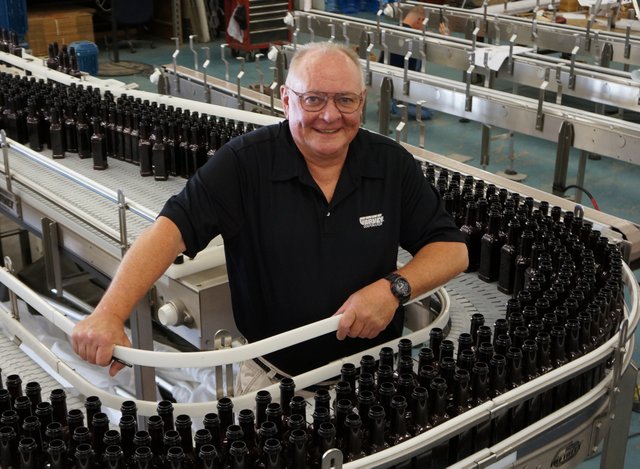
What is throughput, you may ask? Simply the average amount of products a packaging line produces per minute while fully functioning. With this number, it is easy to figure out how many products are produced per shift, per day, per month and per year. There is a mathematical equation for figuring out any facility’s throughput, and determining the line efficiency, which we at Garvey provide for free.
The term line efficiency is used when talking about the overall efficiency of a production line and directly pertains to a factory’s throughput. There is a new field of study in engineering specifically focused on plant design and efficiency. It is called PSE or Production Systems Engineering, and this study has determined the production maximizing effects of proper line buffering and accumulation.
Buffer conveyors or accumulation systems are multi-purpose machines typically used before and after the slowest machine in a production line or the constraint. This protects the constraint from stops that may occur through the rest of the line, allowing it to work at its most efficient rate.
There are many different types of accumulation systems out there. How does one go about figuring out which accumulation solution is good for their product line? Well, we can start by answering a few simple questions:
- Is your production line high speed?
- Is your product fragile or hard to handle?
- What is your current line efficiency?
- Which machine is your constraint?
- Do you have more than one constraint?
This Q&A is what we use to determine a solution that is right for you and will help you maximize your production.
Choosing a bottle filler
Chris Riphenburg, head brewer
Ale Asylum (Madison, Wis.)
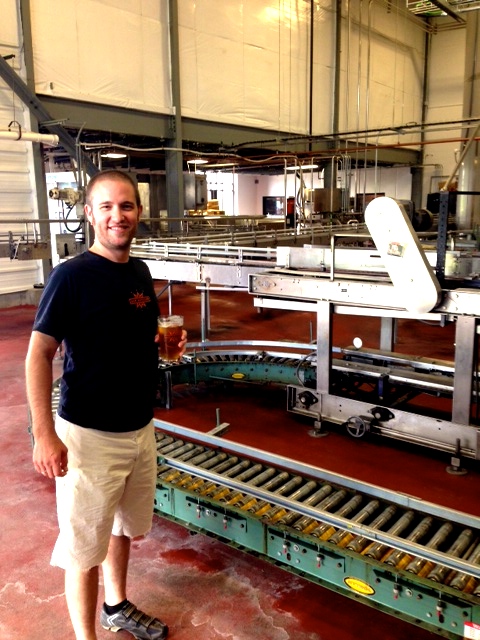
No matter how we look at it, packaging our beer is a difficult and daunting task. Choosing the correct bottle filler will have a very large impact on the flavor and acceptance of your beer in the market. In order to help you through the process, there are a few important questions to ask yourself. How long will the shelf life be? How many bottles per minute? What is the average short fill rate? Do I have access to spare parts and support? Will it be fast enough to handle growth before having to upgrade? And how much does it cost?
The cost, of course, will depend on your quality standards. Slower inline filling machines will be less expensive, but they will also produce a shorter shelf life. Faster double pre-evacuation rotary filling machines will be most expensive, but they will produce the best shelf life. There are third party N2 and CO2 dosers you can add to the slower inline and old rotary non pre-evacuation filling machines to help increase shelf life. There are many other pieces of equipment needed to run a successful bottling line. Always start with choosing the correct filling machine and then work your way out from there. One last bit of advice: if you don’t have an engineer on staff, become friends with one quickly. There is always something that needs to be repaired.
Pressure-sensitive labels
Matt Rompala, product and business development manager, wine and spirits
Avery Dennison Label and Packaging Materials (Mentor, Ohio)

For many craft brewers, pressure-sensitive labels may be a better option than glue-applied labels. Pressure sensitive labels eliminate some of the operational issues inherent with glue, are more versatile and provide greater design flexibility. Specifically, pressure-sensitive labels don’t require a glue tank in the labeling process, eliminating the potential for leaks and related downtime and dramatically reducing changeover times.
Pressure sensitive labels make especially good sense for craft brewers because they are often bottling in smaller batches and so have to do more frequent changeovers. The switch to pressure sensitive can also provide benefits in the area of shelf appeal and impact. Pressure-sensitive labels support sub-surface printing and a no-label look, allow dynamic label shapes and enable outstanding print graphics and visual effects. With the number of craft brewers continuing to grow, it is becoming harder and harder to differentiate. Pressure sensitive labels give craft brewers one more way to create a distinct and compelling image for their brand.

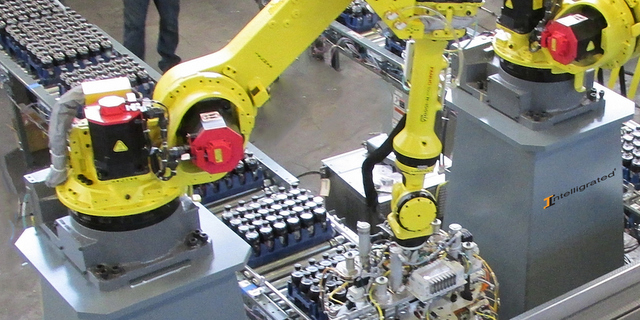
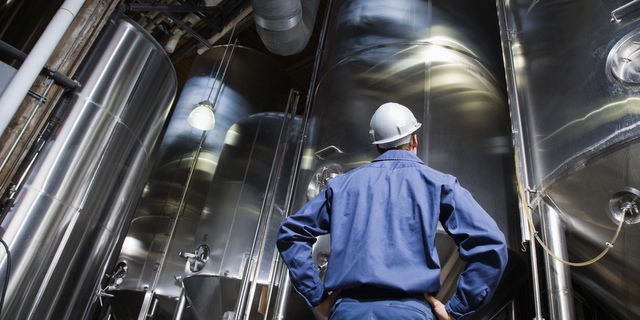
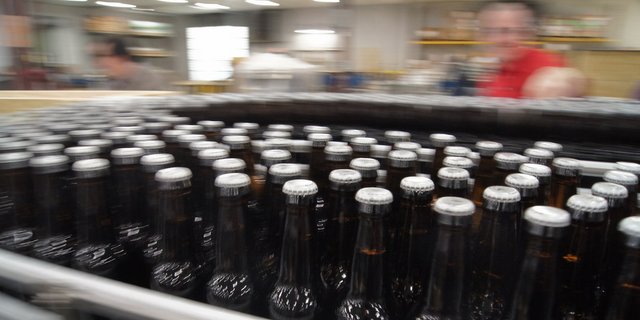

RT @MargarettOleary: 10 packaging tips from famous craft brewers and expert manufacturers http://t.co/CZQUeb6fkK #craftbeer #labels
RT @HughesBrews: 10 packaging tips from expert craft brewers/manufacturers- including @shortsbrewing Tyler Glaze! http://t.co/XpRaBQy2Iu vi…
10 packaging tips from expert craft brewers/manufacturers- including @shortsbrewing Tyler Glaze! http://t.co/XpRaBQy2Iu via @craftbrewingbiz
10 packaging tips from expert craft brewers/manufacturers http://t.co/87ziH53cXK @Craftbrewingbiz #Labels http://t.co/DZyfL9KpMk
Regnier Insurance for Wineries & Breweries liked this on Facebook.
RT @BeerLawCenter: 10 packaging tips from expert craft brewers/manufacturers http://t.co/qdkOx11ehb
10 packaging tips from expert craft brewers/manufacturers http://t.co/qdkOx11ehb
RT @mrbrewreview: 10 packaging tips from expert craft brewers/manufacturers http://t.co/WC3EXS1Cg0 via @craftbrewingbiz
10 packaging tips from expert craft brewers/manufacturers http://t.co/WC3EXS1Cg0 via @craftbrewingbiz
RT @GlobalBevERP: Read MicroBrew Today http://t.co/5qF9qhPiCy
RT @GlobalBevERP: Read MicroBrew Today http://t.co/5qF9qhPiCy
Read MicroBrew Today http://t.co/5qF9qhPiCy
RT @MargarettOleary: 10 packaging tips from famous craft brewers and expert manufacturers http://t.co/CZQUeb6fkK #craftbeer #labels
10 packaging tips from famous craft brewers and expert manufacturers http://t.co/CZQUeb6fkK #craftbeer #labels
RT @PipinoilBrewer: Long but worthy reading: 10 packaging tips from expert craft brewers/manufacturers http://t.co/rlNxWdE1Tl via @craftbre…
RT @BrewandCovered: The science of beer goes beyond the chemistry of brewing. The process of packaging it is an equally impressive feat! ht…
The science of beer goes beyond the chemistry of brewing. The process of packaging it is an equally impressive feat! http://t.co/AkpMxHnsLl
RT @garveycorp: 10 packaging tips from expert craft brewers/manufacturers http://t.co/UdAV099Yc0 #craftbrewer #packaging #bottling #efficie…
RT @garveycorp: 10 packaging tips from expert craft brewers/manufacturers http://t.co/UdAV099Yc0 #craftbrewer #packaging #bottling #efficie…
RT @Ale_Asylum: Head Brewer Chris contributed to an article on packaging tips for @CraftBrewingBiz http://t.co/jvf4PRH3SJ. Great piece!
RT @PremiumNearBeer: RT @BeerzHerez: #craftbeer #packaging #tips … 10 Packaging Tips From Expert Craft Brewers/Manufacturers http://t.co/…
RT @BeerzHerez: #craftbeer #packaging #tips … 10 Packaging Tips From Expert Craft Brewers/Manufacturers http://t.co/Nn1PayND36
RT @BeerzHerez: #craftbeer #packaging #tips … 10 Packaging Tips From Expert Craft Brewers/Manufacturers http://t.co/wgVSNxLs4W
#craftbeer #packaging #tips … 10 Packaging Tips From Expert Craft Brewers/Manufacturers http://t.co/wgVSNxLs4W
Michigan Beer Maps liked this on Facebook.
Matt Smith liked this on Facebook.
RT @EnhanceUrBrand: Thanks for including us! RT CraftBrewingBiz:10 packaging tips from famous craft brewers and manufacturers. http://t.co…
Thanks for including us! RT CraftBrewingBiz:10 packaging tips from famous craft brewers and manufacturers. http://t.co/X34ZGCtj4a
RT @mauibrewingco: Check out our Dir of Brewery Ops… #craftbeer #industry #packaging #tips http://t.co/0gkPXUi8cU
RT @mauibrewingco: Check out our Dir of Brewery Ops… #craftbeer #industry #packaging #tips http://t.co/0gkPXUi8cU
Check out our Dir of Brewery Ops… #craftbeer #industry #packaging #tips http://t.co/0gkPXUi8cU
RT @PipinoilBrewer: Long but worthy reading: 10 packaging tips from expert craft brewers/manufacturers http://t.co/rlNxWdE1Tl via @craftbre…
Long but worthy reading: 10 packaging tips from expert craft brewers/manufacturers http://t.co/rlNxWdE1Tl via @craftbrewingbiz
RT @AdvancedLabels: 10 packaging tips from expert craft brewers/manufacturers http://t.co/iXDgA6NN28 by @Craftbrewingbiz http://t.co/QwpPEc…
10 packaging tips from expert craft brewers/manufacturers http://t.co/iXDgA6NN28 by @Craftbrewingbiz http://t.co/QwpPEcI6M3
RT @Ale_Asylum: Head Brewer Chris contributed to an article on packaging tips for @CraftBrewingBiz http://t.co/jvf4PRH3SJ. Great piece!
Head Brewer Chris contributed to an article on packaging tips for @CraftBrewingBiz http://t.co/jvf4PRH3SJ. Great piece!
Pilot Malt House liked this on Facebook.
RT @CraftBrewingBiz: 10 packaging tips from famous craft brewers and manufacturers. http://t.co/rxbSmTL6F1 @newbelgium @NinkasiBrewing
RT @crsimp01: 10 packaging tips from expert craft brewers/manufacturers http://t.co/Ldd43dSB3E via @craftbrewingbiz
RT @CraftBrewingBiz: 10 packaging tips from famous craft brewers and manufacturers. http://t.co/rxbSmTL6F1 @newbelgium @NinkasiBrewing
10 packaging tips from expert craft brewers/manufacturers http://t.co/Ldd43dSB3E via @craftbrewingbiz